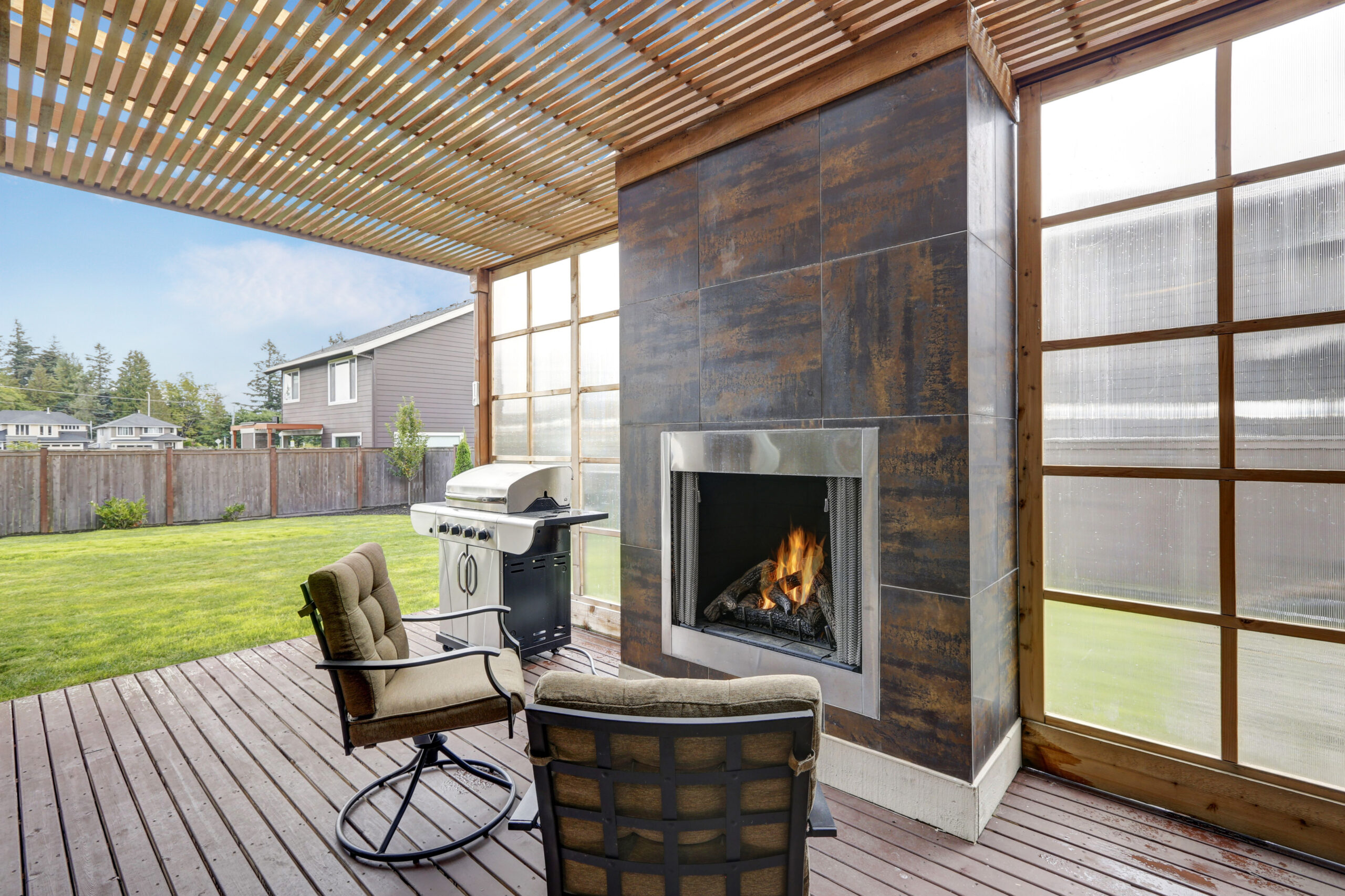If you have an exterior deck, you can add to its functionality and looks by adding a covering. Deck coverings come in a variety of shapes and types. Depending on their size and type, they can protect your deck from rain, sun, as well as debris and dust. A deck cover costs about $1,300 on average.
You have plenty of options when it comes to deck coverings for existing decks. Popular coverings include awnings, pergolas, attached overhead coverings, roof extensions and arbors. The right type of covering is the one that best fits with the overall aesthetics of your decking while also adding practical utility to the space.
Why use Deck Coverings?
Your hardwood or composite deck may look stunning and perfect on a clear, breezy day. But in the hot summers or rainy season, it becomes impossible to enjoy a good time on an open deck. This is where deck coverings are handy.
Quality deck coverings make your deck usable year-round. This means you can cherish your favorite outdoor spot anytime. They also make the space available for more formal occasions such as dinners or other events with small gatherings.
Types of Deck Coverings
As mentioned above, you have a variety of choices when determining the type of covering you want for your deck. Here is a quick look at some of them:
- Awning: You can choose between a fixed awning and a retractable awning. A retractable awning will fold and unfold quickly, giving you the best of both worlds. However, it also costs a lot more than a fixed awning.
- Pergola: A pergola adds a classic feature to your deck. Your average pergola will have multiple posts and columns supporting a beamed roof that is partially open. You can cover the roof with a fabric of your choice. A pergola is a permanent addition to your deck and typically makes senses for modest-sized decks.
- Pavilion: You can choose between a portable and a permanent pavilion. A portable pavilion is an excellent way to add shade to your deck while also keeping a portion of the deck open. The portable option also costs less.
- Roof Extension: A roof extension is often one of the costlier deck coverings. That being said, it makes sense when you want to maintain the overall aesthetic of your home. If it is not exactly feasible, the next best thing is a permanent overhead attachment that affixes to the wall at the edge of the deck.
When you are considering a covering for deck, you will find virtually endless deck shade ideas. This is because each deck is unique. Even if you choose from a standard covering type, such as an awning, you must ultimately customize the option so that it blends in with your deck and adds to its beauty and utility.
If you’re thinking about adding a deck to your property, your planning should take into account ROI variables. Materials, size, access, and the “wow factor” all contribute to a prospective buyer’s perception of the value added by a deck to the property. It’s worth becoming familiar with deck construction in the comparable properties in your area so you can position yours where you want to be value-wise. Another value relationship to consider is that between your deck budget and the overall value of the property. It doesn’t make ROI dollars and sense to build something too grand for the size and likely resale price of the home. One rule of thumb used by contractors and architects is that a deck should be no larger than the home’s biggest interior space.
Keep in mind, too, that adding value to your home gets the attention of the assessor and the underwriter, so your property taxes and insurance premiums are like to be increased. Like anything else built by human beings, a deck will inevitably require some maintenance and/or repair as time goes by. Good choices of materials, with expert design and deck building, are the ticket to keeping those costs down and your enjoyment and ROI up.

